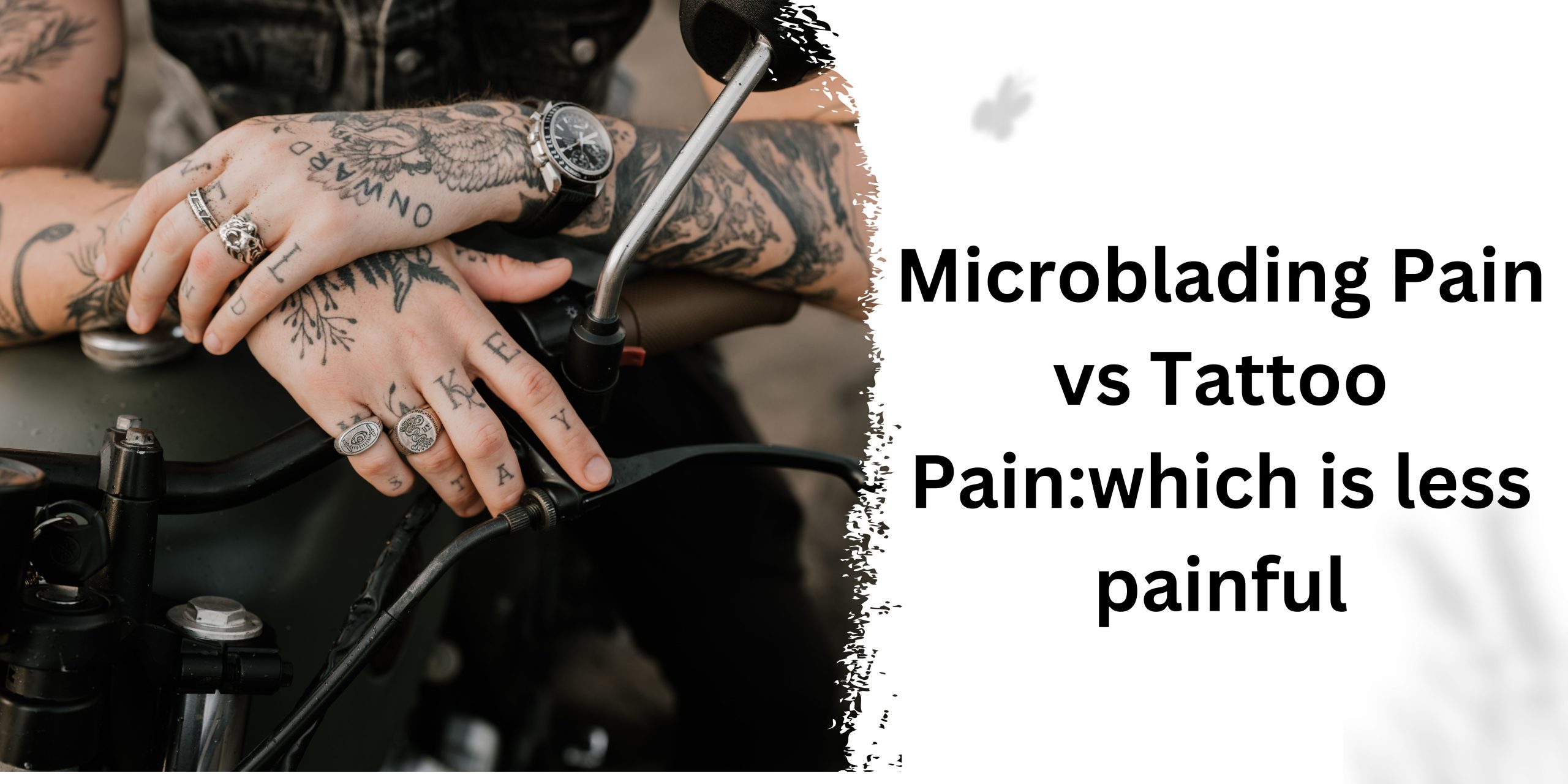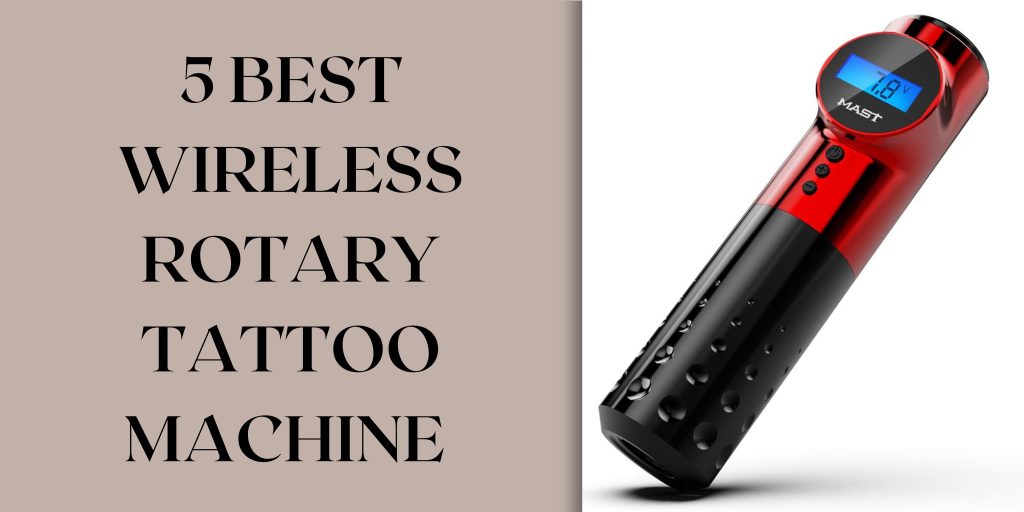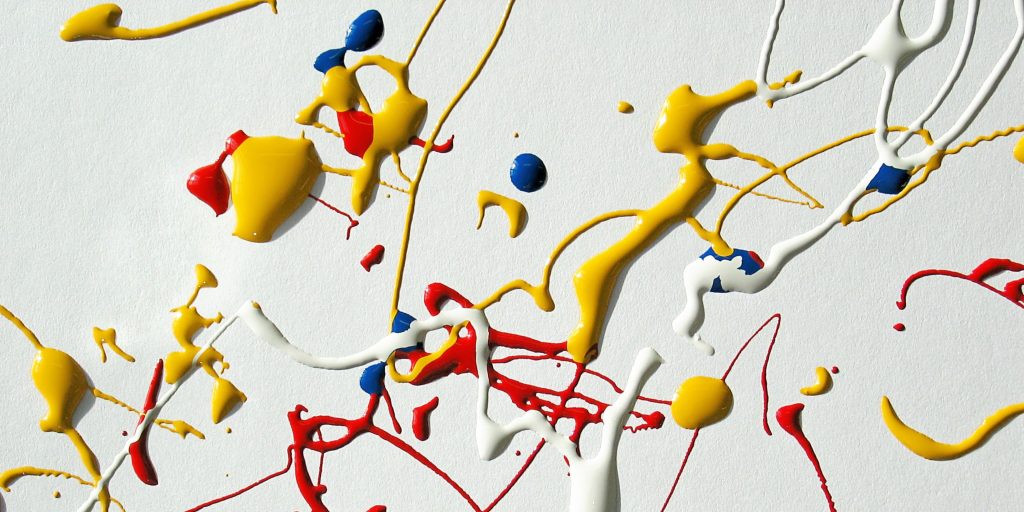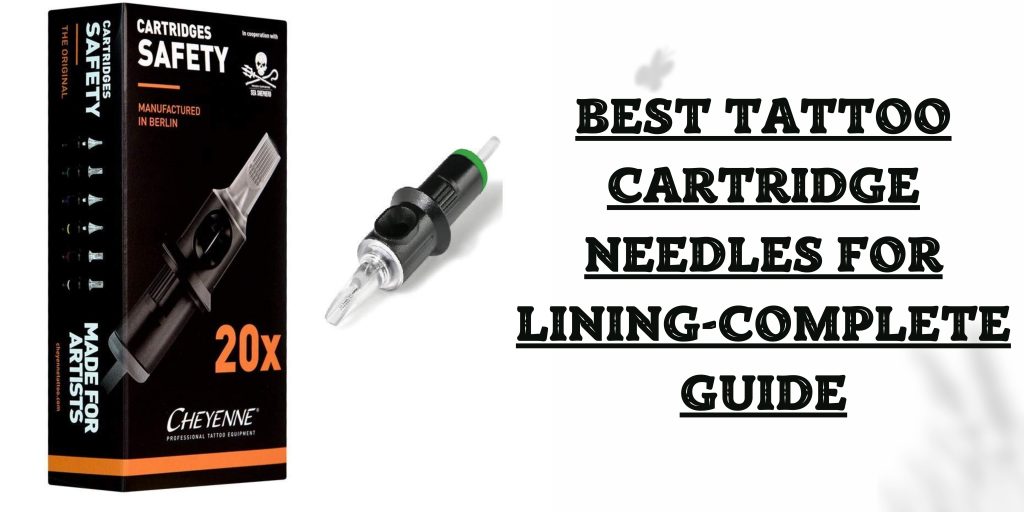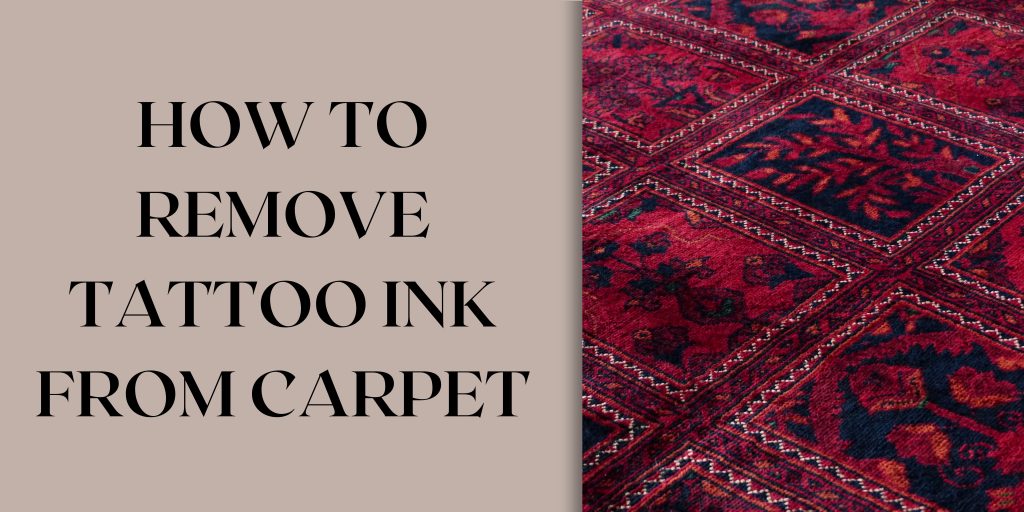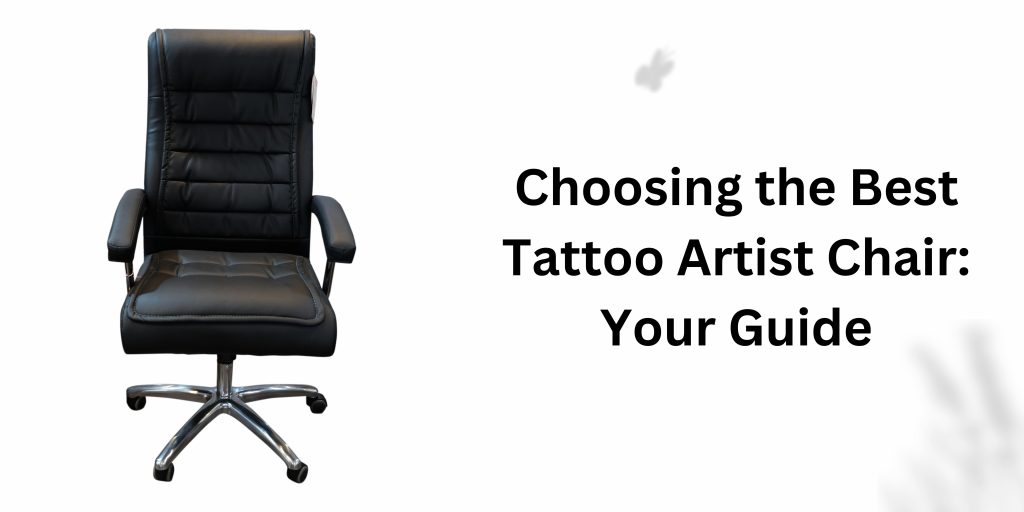In the world of body art and self-expression, there exist countless methods to adorn and enhance our physical appearance. Two popular options that have gained significant attention in recent years are microblading and tattoos. These artistic practices offer unique ways to showcase one’s style and personality, but they also come with their own sets of experiences, including the sensation of pain. In this article, we will delve into the world of microblading and tattoos, exploring the differences in pain, procedure, and aftercare. So, let’s embark on this journey of self-expression and self-discovery, comparing microblading pain vs tattoo pain.
The First Encounter: Microblading Pain
Our story begins with microblading, an eyebrow-enhancing technique that has taken the beauty industry by storm. Imagine waking up every day with perfectly shaped and defined eyebrows without the hassle of pencilling them in. This semi-permanent procedure involves a skilled technician using a hand-held tool to etch tiny, hair-like strokes into the superficial layers of the skin, creating the illusion of fuller brows. But what about the pain?
The Microblading Experience
Microblading is often praised for its relatively low level of pain. Most individuals who have undergone the procedure describe it as a discomfort rather than an outright painful experience. The technician typically applies a numbing cream to the eyebrow area before commencing the procedure, which significantly reduces any potential discomfort.
As the tiny strokes are made, some clients report feeling a sensation akin to light scratching or slight pressure. This sensation is quite manageable and generally does not cause much distress. The discomfort level can vary from person to person, with some individuals barely feeling anything at all. Therefore, microblading pain is often described as minimal, making it a preferred choice for those with a low pain threshold.
The Aftermath of Microblading
Once the microblading session is complete, the discomfort quickly subsides. Clients may experience minor redness and swelling around the treated area, which is a normal part of the healing process. This usually disappears within a day or two.
To maintain the desired results, clients are advised to follow a post-procedure care routine, which includes avoiding excessive sun exposure, refraining from using makeup on the treated area, and keeping it clean and moisturized. Overall, the pain associated with microblading is temporary and mild, making it a popular choice for those seeking a convenient way to enhance their eyebrows.
Read More: Does Behind Ear Tattoos Hurt?
Tattoo Pain: A Deeper Dive into Artistic Expression
Now, let’s shift our focus to the world of tattoos, a form of body art that has been practised for centuries across various cultures. Tattoos are a means of personal expression, with each piece telling a unique story. The process of getting a tattoo is significantly different from microblading, and so is the pain associated with it.
The Tattoo Experience
Tattoos involve injecting ink deep into the skin’s dermal layer using a needle attached to a tattoo machine. This process is more invasive than microblading, as it penetrates into deeper layers of the skin. As a result, the pain experienced during a tattoo session is often more intense compared to microblading.
Tattoo pain can vary widely depending on several factors, including the location of the tattoo, the individual’s pain threshold, and the skill of the tattoo artist. Some areas of the body are more sensitive than others, and getting a tattoo in a sensitive area can be significantly more painful. For instance, tattoos on the ribs, feet, or inner arm tend to be more uncomfortable than those on less sensitive areas like the upper arm or calf.
The Aftermath of Tattooing
After getting a tattoo, the pain doesn’t end with the completion of the session. The skin around the tattooed area may be swollen, red, and sore for several days. It’s common to experience a sensation similar to a sunburn during this initial healing phase. The tattooed area may also itch as the skin heals, and it’s crucial not to scratch it to avoid damaging the artwork.
Proper aftercare is essential for ensuring the tattoo heals correctly. This includes keeping the tattoo clean, applying a recommended ointment or cream, and avoiding activities that could lead to infection or damage. Tattoos can take weeks to fully heal, and during this time, the discomfort may persist, albeit at a milder level than during the actual tattooing process.
Read More: which is better Medium Taper Vs Long Taper Needles
Comparing Microblading Pain vs Tattoo Pain
Now that we’ve explored the experiences of microblading and tattooing individually, let’s draw a comparison between the two in terms of pain and other aspects.

Pain Level
Microblading is generally associated with minimal discomfort, thanks to the application of numbing cream and the superficial nature of the procedure. It is often described as a sensation of light scratching or pressure.
Tattoo pain, on the other hand, can vary from moderate to intense, depending on factors like location, individual pain tolerance, and the tattoo artist’s technique. It is often compared to the sensation of a continuous needle piercing the skin.
Duration of Pain
Microblading discomfort is short-lived and typically subsides within a few hours to a day after the procedure. Clients can return to their normal activities relatively quickly.
Tattoo pain, while more intense during the session, tends to last longer. The initial discomfort can persist for several days, and the tattoo may continue to be sensitive as it heals, which can take weeks.
Aftercare
Both microblading and tattoos require proper aftercare to ensure successful healing. Clients must follow specific instructions to prevent infection and preserve the quality of the work.
Choosing Between Microblading and Tattoos
The choice between microblading and tattoos ultimately depends on personal preferences, pain tolerance, and the desired outcome. Here are some considerations to help you make an informed decision:
Microblading may be the preferred choice if:
- You want to enhance your eyebrows without the commitment of a permanent tattoo.
- You have a low pain tolerance and prefer a less painful procedure.
- Convenience and quick recovery are essential to you.
Tattoos may be the preferred choice if:
- You are looking for a long-lasting form of self-expression.
- You are willing to endure more significant pain for the sake of a meaningful tattoo.
- You appreciate the artistry and cultural significance of tattoos.
Comparing Sensations: Microblading vs Threading
Now, let’s compare the sensations experienced during microblading and threading to determine which method may be perceived as more painful.
| Microblading Sensation | Threading Sensation |
|---|---|
| Scratching or Pinching: During microblading, clients typically feel a scratching or pinching sensation as the fine needles create hair-like strokes on the skin’s surface. This sensation is often likened to the feeling of a small, sharp object lightly scraping the skin. | Quick Pulling Sensation: During threading, clients experience a quick pulling or tugging sensation as the technician manipulates the thread to remove hair. The sensation is akin to a swift pinch and is localized to the area being threaded. |
| Numbing Cream: To minimize discomfort, microblading technicians typically apply a numbing cream to the eyebrow area before the procedure. This cream numbs the skin’s surface, making the sensation more manageable. | Immediate Relief: Unlike microblading, the discomfort associated with threading is short-lived and subsides almost instantly once the hair is removed. |
| Individual Variation: The level of discomfort during microblading can vary significantly among individuals. Some people report minimal discomfort, while others may find it slightly more uncomfortable. | Individual Variation: Just like with microblading, the level of discomfort during threading can vary from person to person. However, because threading is a fast process, any discomfort is typically over quickly. |
Which Is More Painful?
Whether microblading or threading is more painful depends on individual pain tolerance and sensitivity. However, there are some general considerations:

Duration of Discomfort: Microblading involves a continuous sensation of scratching or pinching as the technician works on creating eyebrow strokes. In contrast, threading involves a quick, momentary sensation as each hair is pulled. Therefore, microblading discomfort may be perceived as more prolonged.
Post-Procedure Sensation: After microblading, clients may experience minor redness and swelling, which can be uncomfortable but generally subside within a day. Threading typically does not result in lingering discomfort or aftereffects.
Read More: How bad do nipple tattoos hurt
Why Does Microblading Hurt More the Second Time?
Factors Contributing to Increased Discomfort
Scar Tissue Formation
During the healing process after the first microblading session, some clients may develop scar tissue at the site of the initial procedure. Scar tissue can be denser and less flexible than normal skin, which can make the second microblading session more uncomfortable. When the technician makes new strokes over scar tissue, it can cause a sensation of increased pressure or discomfort.
Sensitization of Nerve Endings
After the first microblading session, the nerve endings in the eyebrow area may become more sensitive. This sensitization can occur due to the initial trauma to the skin and the body’s natural response to heal and protect the area. As a result, clients may perceive the sensation of the microblading tool differently during the second session, potentially finding it more uncomfortable.
Expectation and Perception
Clients who have already experienced the microblading process during their first session may have certain expectations or perceptions about how it will feel during subsequent sessions. This psychological factor can influence the perception of pain or discomfort. If a client anticipates that the second session will be more painful, they may be more sensitive to any sensation, making it feel more uncomfortable.
Changes in Technique
The second microblading session may involve adjustments to the shape, colour, or density of the existing eyebrow microblading. In some cases, the technician may need to work more extensively in certain areas, which can result in increased discomfort. Changes in technique, such as deeper or more frequent strokes, can contribute to the sensation of increased pain.
Managing Discomfort During the Second Microblading Session
If you’re concerned about increased discomfort during your second microblading session, there are steps you can take to manage it:
- Communicate with Your Technician: Discuss your concerns with your microblading technician before the second session. They can explain the process and any changes in technique, address your questions, and provide guidance on managing discomfort.
- Numbing Cream: Just as in the first session, your technician can apply numbing cream to the eyebrow area to minimize discomfort during the procedure. Be sure to inform them if you have experienced increased sensitivity since the first session.
- Pain Management Techniques: You can employ pain management techniques, such as deep breathing and focusing on relaxing during the procedure, to help reduce discomfort.
- Follow Aftercare Instructions: Proper aftercare is essential for a smooth healing process. Follow your technician’s aftercare instructions carefully to minimize any post-procedure discomfort.
- Consider Touch-Up Sessions: If discomfort is a significant concern, you can consider spacing out touch-up sessions over a more extended period. This may allow your skin to fully heal and potentially reduce sensitivity.
Conclusion
Both microblading and tattoos offer unique ways to express oneself artistically. While microblading is associated with minimal pain and a shorter recovery period, tattoos can be more painful but offer a long-lasting form of self-expression. Ultimately, the choice between the two comes down to individual preferences, pain tolerance, and the significance of the artwork. So, whether you opt for microblading or a tattoo, may your journey into self-expression be a painless and beautiful one.

